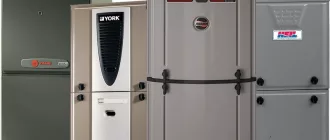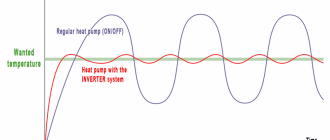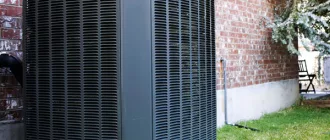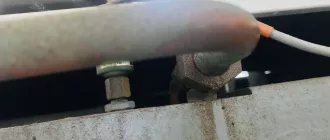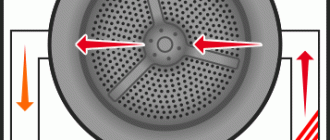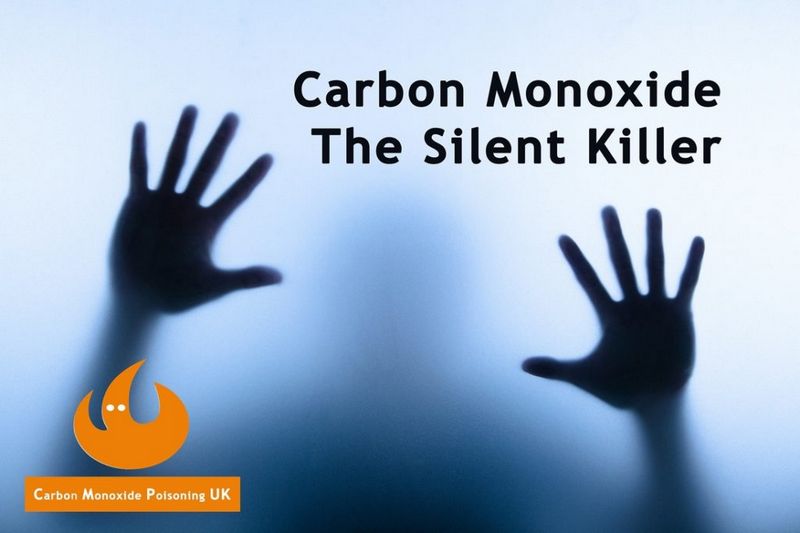
Understanding the Dangers: A Guide to Carbon Monoxide for Homeowners
Carbon monoxide is a silent threat that every homeowner needs to be aware of. This odorless, colorless gas is produced by the incomplete combustion of fossil fuels, such as gas, oil, coal, and wood. Without proper ventilation, carbon monoxide can quickly build up in the home, posing a serious health risk to those inside.
Many homeowners are unaware of the danger that carbon monoxide presents. Unlike other gases, carbon monoxide cannot be detected by our senses. It is often referred to as the silent killer, as it can cause symptoms such as headaches, nausea, dizziness, and confusion. In severe cases, it can even be deadly.
It is important for homeowners to understand the sources of carbon monoxide in their homes. Common sources include faulty furnaces, water heaters, fireplaces, and gas stoves. These appliances should be regularly inspected and maintained to ensure they are venting properly and not releasing dangerous levels of carbon monoxide into the home.
Homeowners should also invest in carbon monoxide detectors for added safety. These devices can alert you if carbon monoxide levels in your home reach a dangerous level, allowing you to evacuate and seek medical attention if necessary.
Overall, awareness and prevention are key when it comes to protecting yourself and your loved ones from the silent threat of carbon monoxide. By knowing the sources of carbon monoxide, properly maintaining your appliances, and investing in carbon monoxide detectors, you can ensure the safety of your home and family.
The Danger of Carbon Monoxide
Carbon monoxide (CO) is a silent threat that every homeowner needs to know about. This odorless and colorless gas can be deadly if not detected and treated properly. The threat of carbon monoxide poisoning is real, and it is important to understand the facts and take the necessary precautions to protect yourself and your family.
Carbon monoxide is produced by the incomplete combustion of fossil fuels such as natural gas, oil, coal, and wood. Common sources of carbon monoxide in the home include furnaces, water heaters, fireplaces, and portable generators. When these fuel-burning appliances are not properly installed or maintained, they can produce high levels of carbon monoxide.
One of the dangers of carbon monoxide is its silent nature. It is not easily detectable by our senses, so you may be exposed to high levels without even knowing it. Initial symptoms of carbon monoxide poisoning are often mistaken for the flu, including headache, nausea, dizziness, and fatigue. Prolonged exposure can lead to more severe symptoms, such as confusion, loss of consciousness, and even death.
To protect yourself and your family from the threat of carbon monoxide, it is important to have carbon monoxide detectors installed throughout your home. These devices can detect the presence of carbon monoxide and alert you before levels become dangerous. It is also crucial to have your fuel-burning appliances regularly inspected and maintained by a qualified professional.
- Install carbon monoxide detectors on every level of your home, especially near bedrooms.
- Test your carbon monoxide detectors regularly to ensure they are working properly.
- Do not use portable generators, charcoal grills, or other fuel-burning devices indoors.
- Have your furnace, water heater, and other fuel-burning appliances inspected annually.
By being aware of the dangers of carbon monoxide and taking the necessary precautions, you can protect yourself and your family from this silent threat. Remember, knowledge is power, and knowing about the threat of carbon monoxide is the first step in keeping yourself and your loved ones safe.
Understanding Carbon Monoxide poisoning
Carbon monoxide (CO) is an odorless, colorless gas that is produced by the incomplete burning of various fuels, including natural gas, oil, and wood. It is often referred to as “the silent threat” because it cannot be seen, smelled, or tasted. This makes it difficult for homeowners to know when they are being exposed to dangerous levels of carbon monoxide.
It is important for homeowners to understand the risks and symptoms associated with carbon monoxide poisoning. Carbon monoxide is highly toxic and can cause serious health problems or even death if not detected and treated promptly. Common symptoms of carbon monoxide poisoning include headache, nausea, dizziness, weakness, and confusion. In severe cases, it can lead to loss of consciousness, seizures, and even coma.
There are several steps that homeowners can take to protect themselves and their families from carbon monoxide poisoning. First and foremost, it is essential to have working carbon monoxide detectors installed throughout the home. These detectors should be placed near bedrooms and on every level of the house. It is also important to have fuel-burning appliances, such as furnaces, fireplaces, and stoves, inspected and maintained regularly to ensure they are functioning properly and not emitting dangerous levels of carbon monoxide.
If a carbon monoxide detector goes off or if someone is experiencing symptoms of carbon monoxide poisoning, it is vital to leave the home immediately and seek medical attention. Carbon monoxide poisoning is a medical emergency, and prompt treatment is essential for a full recovery.
In conclusion, understanding the silent threat of carbon monoxide and taking the necessary precautions can help homeowners protect themselves and their families from this deadly gas. Being aware of the risks, knowing the symptoms, and having the proper detection devices in place are key in preventing carbon monoxide poisoning and ensuring the safety of everyone in the home.
Symptoms of Carbon Monoxide poisoning
Carbon monoxide is a silent threat that homeowners need to know about. This odorless and colorless gas can be deadly if not detected early. It is important to be aware of the symptoms of carbon monoxide poisoning, as they can often be mistaken for those of the flu or other common illnesses.
- Headache
- Nausea
- Dizziness
- Shortness of breath
- Fatigue
- Confusion
- Blurred vision
- Loss of consciousness
If you or a family member experience any of these symptoms and suspect carbon monoxide poisoning, it is vital to leave the house immediately and get fresh air. Call emergency services and seek medical attention as soon as possible. Installing carbon monoxide detectors in your home can also help prevent the silent threat of carbon monoxide poisoning.
The Importance of Carbon Monoxide Detectors
Carbon monoxide (CO) is a silent threat that all homeowners need to be aware of. It is a colorless and odorless gas that can be deadly if inhaled in high concentrations. CO is produced by the incomplete burning of fuels such as gas, oil, coal, and wood, and can be emitted by appliances like furnaces, stoves, and water heaters.
What makes carbon monoxide extremely dangerous is that without a detector, it is impossible to detect its presence. It can quickly build up within a home, especially in enclosed spaces with poor ventilation. This is why carbon monoxide detectors are so important – they provide an early warning system that can save lives.
A carbon monoxide detector works by continuously monitoring the air for the presence of CO. When the level of CO exceeds a certain threshold, the detector will sound an alarm, alerting the occupants of the potential danger. Some detectors also have visual indicators, such as flashing lights, to further indicate the presence of CO. It is essential to regularly test the detectors to ensure that they are functioning properly.
By installing carbon monoxide detectors in your home, you can have peace of mind knowing that you and your family will be alerted to the presence of this silent threat. It is recommended to have detectors installed on every level of the home, as well as outside each sleeping area. This ensures that you will be alerted to the presence of CO no matter where you are in the house.
In addition to installing detectors, it is crucial to understand the warning signs and symptoms of carbon monoxide poisoning. These can include headaches, dizziness, nausea, confusion, and shortness of breath. If you or someone in your household is experiencing these symptoms and suspect carbon monoxide poisoning, you should immediately evacuate the premises and seek medical attention.
In conclusion, carbon monoxide is a serious threat that all homeowners need to be aware of. Installing carbon monoxide detectors in your home is crucial for early detection and prevention of carbon monoxide poisoning. Remember to regularly test the detectors and familiarize yourself with the warning signs and symptoms. By taking these precautions, you can help keep yourself and your loved ones safe from the silent threat of carbon monoxide.
Tips for Preventing Carbon Monoxide Buildup
Knowing about the silent threat of carbon monoxide is the first step in protecting your home. Here are some important tips for homeowners to prevent carbon monoxide buildup:
1. Install carbon monoxide detectors throughout your home. These devices can alert you if carbon monoxide levels become dangerous.
2. Regularly inspect and maintain fuel-burning appliances, such as furnaces, water heaters, and stoves. Hire a professional to check for any leaks or malfunctions.
3. Ensure proper ventilation in your home. Make sure that all vents, flues, and chimneys are clear and unobstructed.
4. Never use fuel-burning appliances, such as generators or grills, indoors or in enclosed spaces.
5. Never leave a vehicle running in an attached garage, even with the garage door open.
6. Avoid using kerosene heaters or gasoline-powered tools indoors.
7. Educate yourself and your family about the symptoms of carbon monoxide poisoning, such as headaches, dizziness, nausea, and confusion. If you experience these symptoms, leave the area immediately and seek medical attention.
By following these tips, homeowners can help prevent carbon monoxide buildup and protect themselves and their families from this silent threat.
The Dangers of Carbon Monoxide in the Home
Carbon monoxide is a silent threat that all homeowners need to know about. This odorless and colorless gas can be extremely dangerous if not detected in time. It is produced by the incomplete combustion of fossil fuels such as coal, oil, and natural gas.
One of the biggest dangers of carbon monoxide is its ability to go undetected without proper alarms or detectors. Since it has no smell or taste, it is impossible to know if it is present in the air without the help of specialized equipment.
When carbon monoxide is inhaled, it enters the bloodstream and binds to hemoglobin, reducing its ability to carry oxygen. This can lead to a variety of symptoms such as headaches, dizziness, nausea, confusion, and even loss of consciousness. In severe cases, carbon monoxide poisoning can be fatal.
It is important for homeowners to install carbon monoxide detectors in their homes, especially near sleeping areas. These detectors should be tested regularly to ensure they are functioning properly. Additionally, all fuel-burning appliances such as furnaces, water heaters, and stoves should be inspected and maintained by qualified professionals on a regular basis.
Another important step in preventing carbon monoxide poisoning is proper ventilation. Make sure that all combustion appliances have adequate airflow and are not blocked by debris or obstructions. Avoid using portable generators, charcoal grills, or other fuel-burning devices indoors.
- Install carbon monoxide detectors near sleeping areas.
- Test detectors regularly to ensure they are functioning properly.
- Have fuel-burning appliances inspected and maintained by professionals.
- Ensure proper ventilation for combustion appliances.
- Avoid using fuel-burning devices indoors.
By being aware of the dangers of carbon monoxide and taking the necessary precautions, homeowners can protect themselves and their families from this silent threat.
The Health Risks of Carbon Monoxide Exposure
Homeowners need to be aware of the silent threat of carbon monoxide. Carbon monoxide is a poisonous gas that is invisible, odorless, and tasteless. Because it cannot be detected by human senses, it is often referred to as the silent killer.
Exposure to carbon monoxide can have serious health risks. When carbon monoxide is inhaled, it enters the bloodstream and can interfere with the body’s ability to carry oxygen to vital organs, such as the heart and brain. This can lead to carbon monoxide poisoning, which can cause symptoms such as headaches, dizziness, nausea, confusion, and fatigue.
Severe carbon monoxide exposure can be life-threatening. High levels of carbon monoxide can cause loss of consciousness, organ failure, and even death. It is important for homeowners to be aware of the potential sources of carbon monoxide in their homes, such as faulty heating systems, blocked chimneys, or malfunctioning appliances.
To protect themselves and their families, homeowners should install carbon monoxide detectors in their homes. These detectors can alert them to the presence of carbon monoxide before it reaches dangerous levels. It is also important to have heating systems and appliances regularly inspected and maintained to ensure they are functioning properly and not producing dangerous levels of carbon monoxide.
By understanding the health risks of carbon monoxide exposure and taking the necessary precautions, homeowners can help protect themselves and their families from this silent threat.
Carbon Monoxide Safety Tips for Homeowners
Carbon monoxide is a silent threat that homeowners need to know about. This odorless and colorless gas can be deadly if not detected early. Here are some important safety tips to keep your home safe from carbon monoxide:
1. Install carbon monoxide detectors: Make sure to have carbon monoxide detectors installed on every level of your home, especially near bedrooms. Test them regularly to ensure they are working properly.
2. Keep your appliances well-maintained: Have your heating system, water heater, and any other fuel-burning appliances inspected and maintained by a qualified technician annually. This will help to prevent carbon monoxide leaks.

3. Never use generators indoors: Generators should only be used outdoors and at least 20 feet away from doors, windows, and vents. Carbon monoxide can quickly build up in enclosed spaces and cause harm.
4. Don’t leave vehicles running in the garage: Even with the garage door open, running a vehicle inside can still allow carbon monoxide to enter your home. Always pull your car out of the garage to warm it up.
5. Be cautious with charcoal grills and stoves: Charcoal grills and stoves should only be used outdoors. Using them inside can release carbon monoxide. Ensure proper ventilation when using these appliances.
6. Know the signs of carbon monoxide poisoning: Symptoms of carbon monoxide poisoning include headaches, dizziness, nausea, confusion, and fatigue. If you experience these symptoms, get outside into fresh air immediately and seek medical attention.
By following these carbon monoxide safety tips, homeowners can minimize the risk of carbon monoxide exposure and keep their homes and loved ones safe.
How to Choose the Right Carbon Monoxide Detector
Given the silent threat that carbon monoxide poses, it is crucial for homeowners to understand the importance of having a reliable carbon monoxide detector in their homes. Here are some factors to consider when choosing the right detector:
1. Type of detector: There are two main types of carbon monoxide detectors: plug-in and battery-operated. While both are effective in detecting carbon monoxide, battery-operated detectors offer the advantage of working even during power outages.
2. Sensitivity: Look for a detector that has a low-level CO sensor. This will enable the device to detect even small amounts of carbon monoxide, providing you with an early warning of potential danger.
3. Certification: Make sure that the detector you choose is certified by a recognized testing agency, such as Underwriters Laboratories (UL). This ensures that the device has met the necessary safety standards.
4. Features: Consider additional features that may be beneficial, such as a digital display that shows the current CO levels, a built-in alarm, or a tamper-resistant design. These features can enhance the functionality and convenience of the detector.
5. Placement: It is important to install carbon monoxide detectors in the right locations within your home. Place them near bedrooms and living areas, as well as near potential sources of carbon monoxide, such as gas appliances and heating systems.
6. Testing and maintenance: Regularly test your carbon monoxide detector to ensure that it is functioning properly. Follow the manufacturer’s instructions for maintenance, such as changing batteries or replacing the device when necessary.
By considering these factors, homeowners can make an informed decision when choosing the right carbon monoxide detector for their homes. Remember, the safety of your family is at stake, so it is essential to invest in a high-quality and reliable detector.
Common Sources of Carbon Monoxide in the Home
The silent threat of carbon monoxide is something that homeowners need to be aware of. This odorless and colorless gas can be deadly if not detected early on. Understanding where carbon monoxide can come from in the home is crucial in preventing its dangerous effects.
1. Gas Appliances: Gas furnaces, water heaters, stoves, and dryers can all produce carbon monoxide if they are not properly maintained or if there are leaks in the system. Regular inspections and maintenance are necessary to ensure these appliances are functioning safely.
2. Fireplaces and Wood-Burning Stoves: When wood or coal is burned, carbon monoxide can be released into the air. Proper ventilation and regular chimney cleaning should be done to prevent any buildup of this gas.
3. Generators: Portable generators often produce carbon monoxide as a byproduct of the combustion process. These should never be used indoors or in enclosed spaces, as it can quickly lead to carbon monoxide poisoning.
4. Vehicles: Running a car, lawnmower, or any other gas-powered equipment in an attached garage or close to the home can allow carbon monoxide to seep into the living space. It is important to always keep these items outside or in a well-ventilated area.
5. Blocked Vents and Flues: Any obstruction in the ventilation system can prevent carbon monoxide from properly venting outside. This can happen if vents are blocked by snow, debris, or even bird nests. Regular inspection and cleaning of vents and flues can help prevent this issue.
6. Faulty Heating Systems: A malfunctioning heating system can be a major source of carbon monoxide. Cracked heat exchangers or faulty burners can lead to the release of this gas. Regular maintenance and inspections are essential in ensuring the safe operation of heating systems.
7. Blocked Chimneys: Birds, nests, or debris can block the chimney, preventing proper ventilation of carbon monoxide. Regular chimney cleaning, especially before the start of heating season, can help avoid this hazard.
8. Improperly Installed or Damaged Appliances: Appliances that are not installed correctly or have been damaged can leak carbon monoxide into the home. Ensuring proper installation and promptly fixing any issues can help prevent this threat.
Being aware of these common sources of carbon monoxide and taking the necessary precautions to prevent its buildup are paramount for homeowners. Installing carbon monoxide detectors throughout the home and regularly testing them is also essential in keeping your household safe from this silent threat.
What to Do if You Suspect Carbon Monoxide Poisoning
If you suspect carbon monoxide poisoning, you need to take immediate action to protect yourself and your family. Carbon monoxide (CO) is known as a silent threat because it is a colorless, odorless gas that can be deadly. It is important for homeowners to be knowledgeable about the dangers of carbon monoxide and how to respond if they suspect a problem.
First and foremost, if you or anyone in your home is experiencing symptoms of carbon monoxide poisoning, such as headache, dizziness, nausea, or confusion, it is crucial to get fresh air right away. Open all windows and doors to ventilate your home and increase the airflow. Turn off any potential sources of carbon monoxide, such as gas stoves, furnaces, or generators.
Next, evacuate your home and call emergency services. Dial your local emergency number or 911 to report the suspected carbon monoxide exposure. Inform the dispatcher about your symptoms and follow their instructions. It is essential to seek medical attention as soon as possible, even if your symptoms seem to improve after leaving the affected area.
While waiting for emergency responders, avoid going back inside your home until it has been deemed safe by professionals. They will be able to measure the carbon monoxide levels and determine if it is safe to reenter. It is crucial not to ignore any potential signs of carbon monoxide poisoning, as the gas can cause serious health issues and be fatal.
To prevent carbon monoxide poisoning, homeowners should install CO detectors on each level of their home, especially near bedrooms. Regularly check the batteries and test the detectors to ensure they are functioning correctly. Additionally, have your heating systems, water heaters, and any other fuel-burning appliances inspected and serviced annually by qualified professionals.
In conclusion, homeowners need to be aware of the silent threat of carbon monoxide and know what to do if they suspect poisoning. Taking immediate action, such as getting fresh air, evacuating the home, and calling emergency services, is crucial for your safety. Remember to install CO detectors and have your appliances inspected regularly to prevent carbon monoxide exposure. Stay vigilant and protect yourself and your loved ones from this dangerous gas.
Carbon Monoxide Laws and Regulations
Homeowners need to know about carbon monoxide laws and regulations in order to protect themselves and their families from this silent threat. Carbon monoxide is an odorless, colorless gas that can be deadly if not detected in time. That’s why many states and countries have implemented laws and regulations to ensure the safety of homeowners.
One important law is the requirement for carbon monoxide detectors in homes. These devices are designed to detect the presence of carbon monoxide and emit a loud alarm to alert occupants. It is important for homeowners to install these detectors in their homes and regularly test them to ensure they are working properly.
Another regulation is the mandate for regular maintenance of heating systems and appliances. Carbon monoxide can be produced by faulty or poorly maintained heating systems, so it is crucial for homeowners to have their systems inspected and serviced by a qualified professional on a regular basis. This can help prevent the buildup of carbon monoxide and ensure that the systems are functioning safely.
In addition, there are regulations regarding the installation of ventilation systems in homes. Proper ventilation is essential for removing carbon monoxide from indoor spaces and preventing its buildup. Homeowners should ensure that their homes have adequate ventilation and that any existing ventilation systems are regularly inspected and maintained.
It is also important for homeowners to be aware of the symptoms of carbon monoxide poisoning and to know what to do if they suspect they are being exposed to this gas. Symptoms can include headaches, nausea, dizziness, and confusion. If these symptoms occur, homeowners should immediately evacuate their homes, call emergency services, and seek medical attention.
By understanding and complying with carbon monoxide laws and regulations, homeowners can help protect themselves and their families from this silent threat. Regularly testing carbon monoxide detectors, maintaining heating systems, ensuring proper ventilation, and knowing the signs of carbon monoxide poisoning are all important steps to take in ensuring a safe and healthy home.
Carbon Monoxide Awareness and Prevention
Carbon monoxide is a silent threat that homeowners need to know about. It is an odorless, colorless gas that can be produced by appliances such as furnaces, water heaters, and stoves. When it is inhaled, it can be extremely dangerous and even deadly.
It is important for homeowners to be aware of the symptoms of carbon monoxide poisoning, which include headache, dizziness, nausea, and confusion. These symptoms can easily be mistaken for other common illnesses, so it is crucial to have a carbon monoxide detector in your home.
In order to prevent carbon monoxide poisoning, homeowners should have their appliances regularly inspected and maintained by a professional. It is also important to ensure that there is proper ventilation in the home and to never use appliances that are designed for outdoor use indoors.
Another important measure to take is to install carbon monoxide detectors on every level of your home and near bedrooms. These detectors can alert you to the presence of carbon monoxide and give you and your family enough time to evacuate the premises safely.
By being aware of the threat of carbon monoxide and taking preventative measures, homeowners can protect themselves and their families from this silent and deadly gas. Knowing the signs of carbon monoxide poisoning and having the necessary precautions in place can save lives.
Q&A:
What is carbon monoxide?
Carbon monoxide (CO) is a colorless, odorless, and tasteless gas that is produced by the incomplete combustion of fossil fuels, such as gasoline, natural gas, oil, and coal.
How is carbon monoxide dangerous?
Carbon monoxide is dangerous because it can’t be detected by our senses, so it can easily go unnoticed until it’s too late. When inhaled, it replaces oxygen in the blood and can cause symptoms ranging from headache and dizziness to confusion, unconsciousness, and even death.
What are the potential sources of carbon monoxide in a home?
Potential sources of carbon monoxide in a home include gas appliances (such as furnaces, water heaters, and stoves), wood and gas fireplaces, generators, and vehicles running in attached garages. It’s important to ensure that these sources are properly maintained and vented to prevent carbon monoxide buildup.
How can homeowners protect themselves from carbon monoxide poisoning?
To protect themselves from carbon monoxide poisoning, homeowners should install carbon monoxide detectors in their homes, preferably on each level and near sleeping areas. They should also have their heating systems and other appliances checked annually by a qualified professional, and make sure that their chimney and flue are clean and in good working condition.
What are the symptoms of carbon monoxide poisoning?
The symptoms of carbon monoxide poisoning include headache, dizziness, nausea, shortness of breath, confusion, blurred vision, and loss of consciousness. If you or anyone in your home experiences these symptoms and suspects carbon monoxide poisoning, you should immediately leave the area and seek fresh air. You should also call emergency services and get medical help.
What is carbon monoxide?
Carbon monoxide is a colorless, odorless gas that is toxic to humans and animals. It is produced by the incomplete combustion of carbon-based fuels, such as gas, oil, coal, and wood.


